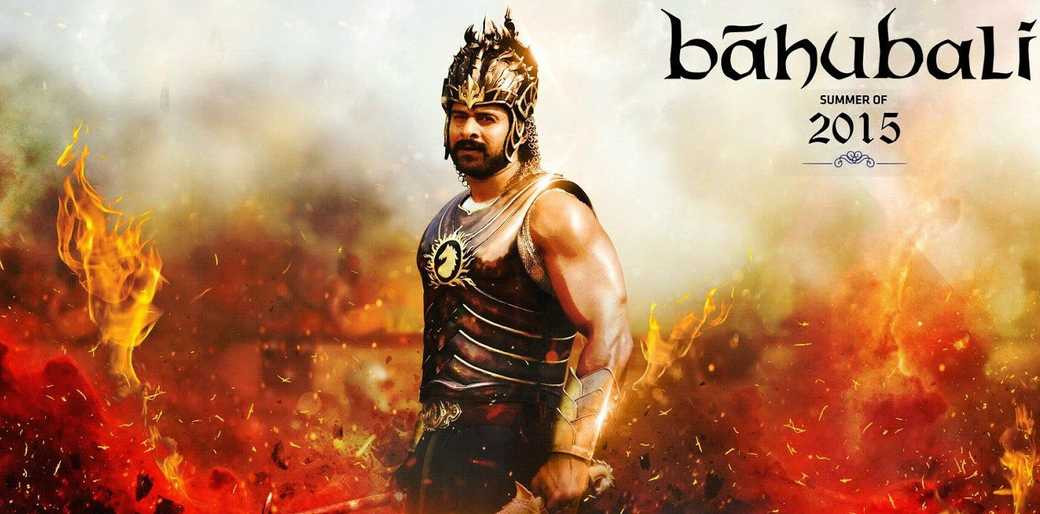The film’s narrative is clearly fictional, though allusions to Ballaladevā (Rana Daggubāti) and Bijjaladevā (Nasser): both actual kings from the Hoysala and Kalachuri dynasties – makes you believe an illusion of actual historic reference.
According to ABHONA PLATES OF SANKARAGANA:(KALACHURI) YEAR 347 of the Abhira era, corresponding to A.D. 597, found in the possession of a Rajput family of Abhona, a village in Kalvan taluka of the Nasik District in the Bombay state, The earliest known Kalachuri family ruled around 550-620 AD.
In the Abhona plates Sankaragana declares his Śaiva faith and the Pāśupata devotion of his father Krsnarāja. Sankaragana's Abhona plates speak of his father Krishnaraja's "illustrious" lineage.
Their capital Mahismati was situated in the Narmada River valley.
The Kalachuri Empire was the name used by two kingdoms who had a succession of dynasties from the 10th-12th centuries, one ruling over areas in Central India (west Madhya Pradesh, Rajasthan) and were called Chedi or Haihaya (Heyheya) (northern branch-Kalchuri Rajput Clan) and the other the southern Kalachuri who ruled over parts of Karnataka. They are supposed to be offshoot of Abhira of Traikutakas dynasty.
18 centuries ago Haihaya/Hariobans/Hayobans/Haiha Rajput clan was extremely powerful and held all the eastern parts of what is now known as central provinces. There they founded the city of Maheswati, Raipur and Ratanpur and furnished the latter with a dynasty which ruled over Chattisgarh for 32 generations. Haihaya is a Lunar Dynasty Rajput clan.
Other minor historical references :
When the movie starts it shows a cave. The similar birth did take place in reality in Guhilot Dynasty.
The Guhilot Dynasty derives its name from guha 'a cave', because one of the wives of the Rana of Meywar, escaping from the sack of Balabhi in 524 AD took refuse among some Brahmans, and was delivered of a son in the cave. The boy was called Goha or 'cave-born' by his protectors, and his descendants bear the title of Guhilot, Grahilot or Gahlot. Rana Pratap was from this same dynasty. Guhilot Dynasty also known as sisodiya dynasty.
Bahubali as King
The story of Bahubali raised by tribals appears to be taken from the life of Maharana Pratap. The jealous queens of Udai Singh forced Maharana Pratap to live in a village below the ridge of Chittorgarh.
Rani Dheer Bai wanted her son Jagmal to succeed Udai Singh, but the seniors in the royal court preferred Pratap, as the eldest son, to be their king. Udai Singh proclaimed his favorite son, 'Jagmal' to be the successor. But surprisingly, in a coronation performed at Gogunda, Maharana Pratap was crowned, and hailed as the "King of Mewar". It's also similar to Ramayana when Bharat was declared as King but people wanted Rama as their king being the eldest Son. The difference is Bharat was good brother and held his brother in high regard. So Bahubali's story is more similar to Rana Pratap's case. In Bahubali climax, Bijjaladevā(Nasser) says his son should be the king, but Shivagami(Ramya Krishna) announces Bahubali to be the king and people start hailing him as the King of 'Mahishmati'.
Rajput Customs & Traditions: Sword Marriage, Dresses & Safa, Salutations And the biggest reference that it’s influenced by Rajput customs and traditions such as marriage with swords. In Rajput community, when matrimonial alliance is formed with less powerful house which can spend much in marriage ceremonies or when the groom is busy fighting wars elsewhere then Sword marriage is preferred. Some weaker Rajput families still prefer sword ceremony marriage as it saves them from expenditures of marriage, this sword marriage ceremony is still practiced in Rajputs of Saurashtra. Although it's not common and preferred only by financially weaker Rajput communities or when there is difference amongst the financial status of two families. And Groom's family do not want to burden the family of bride of this expenditure.
Cutting Head of Minister in Court On the Ground that the Minister has disrespected the ladies, Bahubali cuts the head off in the full court. This event takes historical reference to how Amar Singh Rathore did in Court of Shah Jahan, when he cut the head of Salabat Khan who happens to be relative of Shah Jahan as well. In the case of Amar Singh Rathore, other courtiers and warriors attack him, but Amar Singh Rathore kills them too and run off and was able to successfully escape with his horse, he jumps off from the fort with his horse. Amar Singh Rathore movie: https://www.youtube.com/watch?v=WduhLdkR_eI
Rajput’s salutation Jai Bhawani and Safa can be observed in second part of the movie when Bahubali brings devsena in darbar. Similar to how Arjun brought Dropadi. When Bahubali brings Devsena in court, he was wearing the Rajput Safa.
Note: Actor Prabhas Raju who played Bahubali belongs to Raju community of South, Rajus claim Rajput descent.
Kattappa
The Role of 'Kattappa' and his personality to some extent is inspired by protector of hastinapur, Bhisma of Mahabharta.
Devasena
Her situation seems to be inspired from Devki of Mahabharta, the mother of Lord Krishna. Or some may see it inspired by the movie "Karan Arjun'.
This movie may pave way for more such stories which rather than fiction will be based on real stories. I'd love to see movies on ancient indian or medieval warfare stories of which the bards sing.
Colonel James Todd admitted of having in each state of Rajasthan a war such as "Thrmoplli" and warriors as "Leonidas". Except for some movies not many movies have been made on Indian Warriors. At least not at the scale of Bahubali. And in that sense Bahubali is incredible movie. Awesome Job S.S. Rajamouli.
If you find some more references you can add in comments.
Thanks for Reading!
Article References
INCRIPTIONS OF THE EARLY KALACHURIS, ABHONA PLATES OF SANKARAGANA : (KALACHURI) YEAR 347
Kalchuri Dynasty and various kings
Guhilot dynasty, Handbook on Rajputs - A.H.Bingley
Hariobans, Haihaya clan - Handbook on Rajputs by A. H. Bingley
